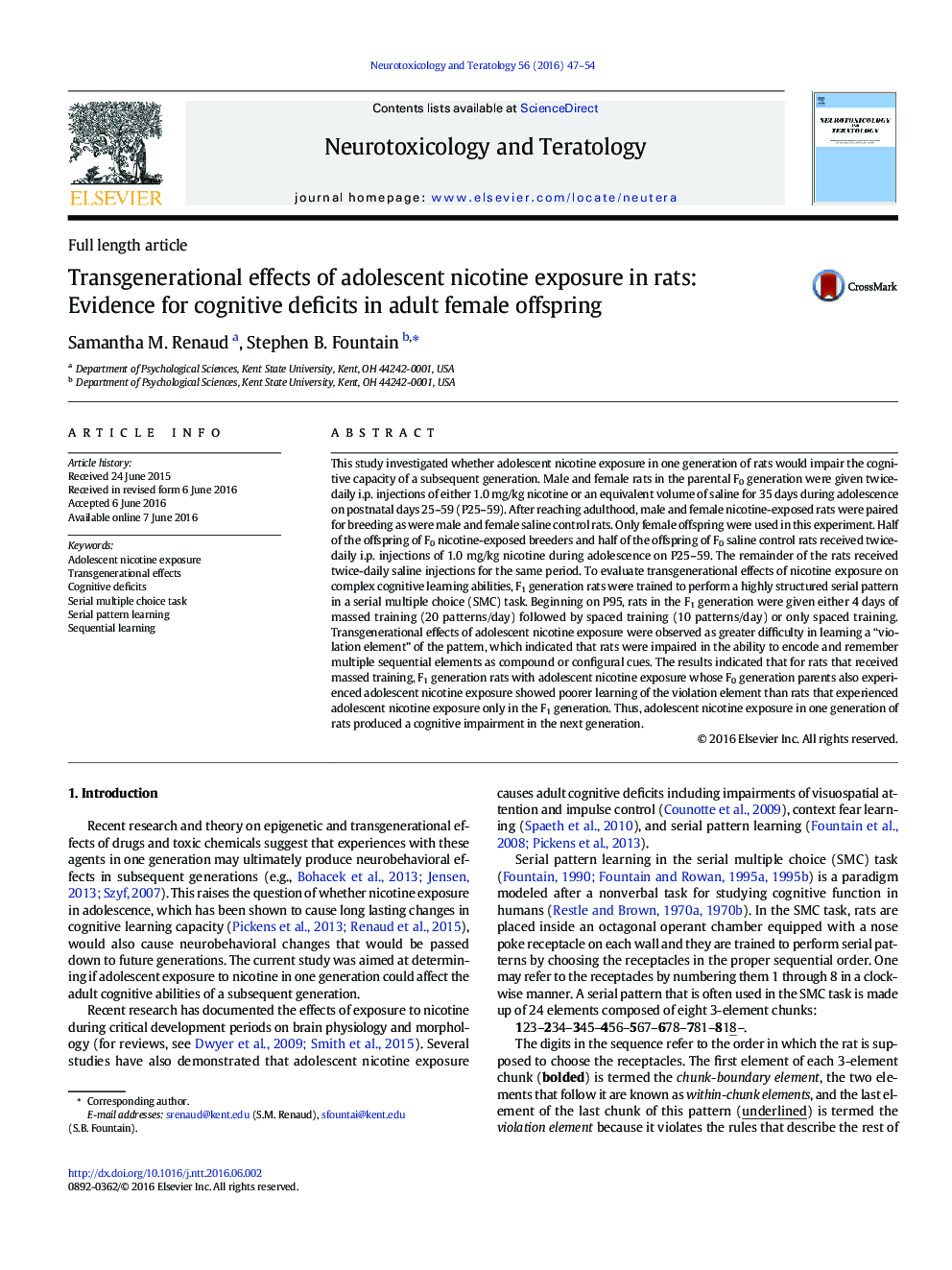| Article ID | Journal | Published Year | Pages | File Type |
|---|---|---|---|---|
| 2590803 | Neurotoxicology and Teratology | 2016 | 8 Pages |
•Transgenerational effects of adolescent nicotine on adult cognition were assessed in rats.•F0 generation breeder rats received either adolescent nicotine or no nicotine exposure.•Female F1 generation offspring received either adolescent nicotine or no nicotine exposure.•F0 and F1 generation nicotine produced cognitive deficits in the F1 generation.•Adolescent nicotine in one generation produced a cognitive impairment in the next generation.
This study investigated whether adolescent nicotine exposure in one generation of rats would impair the cognitive capacity of a subsequent generation. Male and female rats in the parental F0 generation were given twice-daily i.p. injections of either 1.0 mg/kg nicotine or an equivalent volume of saline for 35 days during adolescence on postnatal days 25–59 (P25–59). After reaching adulthood, male and female nicotine-exposed rats were paired for breeding as were male and female saline control rats. Only female offspring were used in this experiment. Half of the offspring of F0 nicotine-exposed breeders and half of the offspring of F0 saline control rats received twice-daily i.p. injections of 1.0 mg/kg nicotine during adolescence on P25–59. The remainder of the rats received twice-daily saline injections for the same period. To evaluate transgenerational effects of nicotine exposure on complex cognitive learning abilities, F1 generation rats were trained to perform a highly structured serial pattern in a serial multiple choice (SMC) task. Beginning on P95, rats in the F1 generation were given either 4 days of massed training (20 patterns/day) followed by spaced training (10 patterns/day) or only spaced training. Transgenerational effects of adolescent nicotine exposure were observed as greater difficulty in learning a “violation element” of the pattern, which indicated that rats were impaired in the ability to encode and remember multiple sequential elements as compound or configural cues. The results indicated that for rats that received massed training, F1 generation rats with adolescent nicotine exposure whose F0 generation parents also experienced adolescent nicotine exposure showed poorer learning of the violation element than rats that experienced adolescent nicotine exposure only in the F1 generation. Thus, adolescent nicotine exposure in one generation of rats produced a cognitive impairment in the next generation.
